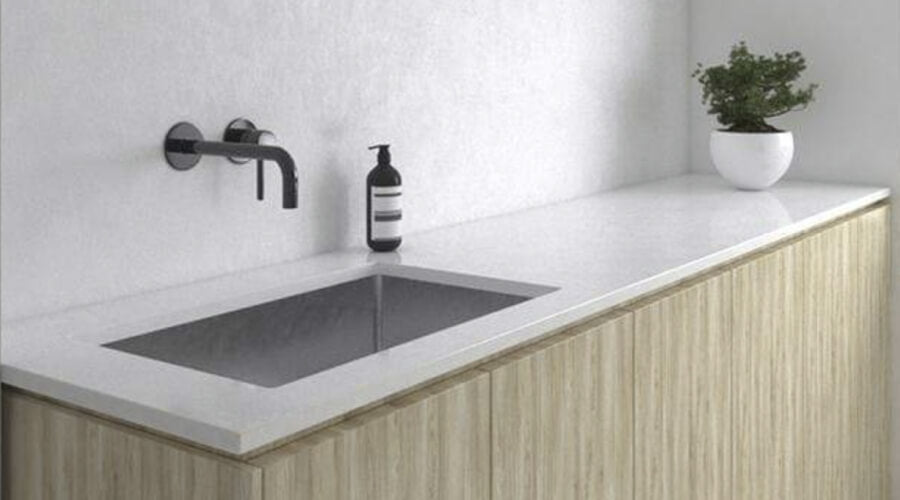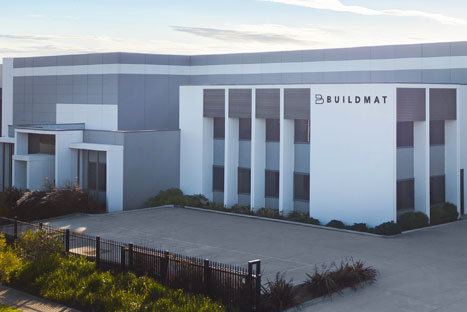Do I Need an Overflow in My Kitchen Sink or Laundry Sink?
That small hole near the top of your kitchen sink or laundry sink isn’t there for looks. It’s called an overflow, and it’s designed to stop water from spilling over. Here’s what it does, whether you really need one, and how to keep it clear.

If you’ve ever noticed a small hole near the rim of your kitchen sink, laundry sink or even bathroom basin – that’s your overflow. It’s not a design quirk but a built-in safety feature. The overflow helps prevent flooding if the tap is accidentally left on or the sink drain gets blocked. But if you’re shopping for new kitchen sinks or laundry tubs, you’ve probably noticed some come with overflows and others don’t. So, do you actually need one? Let’s break it down.
 Many modern double bowl sinks won't come with an overflow as they're large enough to prevent spillage
Many modern double bowl sinks won't come with an overflow as they're large enough to prevent spillage
What Is a Sink Overflow and How Does It Work?
The overflow is a small channel near the top of your sink bowl. Its main job is to stop water from spilling over the edge. If your tap keeps running while the plug is in, the overflow redirects excess water into a hidden overflow drain that connects to your sink’s drain pipe. It’s simple but smart—it can save you from an indoor flood.
Overflows serve a second purpose too: they help your sink drain faster. As water flows down the main waste pipe, air moves through the overflow, keeping the drainage system balanced and preventing gurgling or slow draining. You’ll usually find this setup in stainless steel and fireclay sinks designed with practicality in mind.
Do Kitchen Sinks Need an Overflow?
In most homes across Australia, kitchen sinks don’t strictly need an overflow. Modern designs are usually deep enough to hold plenty of water, and the waste system drains quickly enough to avoid flooding. Double-bowl sinks also act as their own backup – if one bowl fills too high, excess water often moves to the other side before it spills over.
That said, an overflow can be handy if you’ve got a smaller or single-bowl setup. It gives you extra peace of mind if you tend to multitask while the tap’s running. If you’re the type to fill your sink for soaking dishes, an overflow is a smart choice to prevent accidents.
Brands like Caroma and Phoenix design undermount and inset sinks with deeper bowls that reduce the risk of overflow altogether. These are perfect for busy kitchens where functionality and space matter more than extra features.
Do Laundry Sinks Need an Overflow?
It’s a similar story in the laundry. Most laundry sinks and tubs don’t include an overflow. They’re generally large and designed to handle heavy water use, especially when paired with proper floor wastes to catch spills. However, if you often fill your tub for soaking clothes or washing delicate fabrics, a laundry sink with an overflow can help protect against minor floods.
 This Oliveri laundry tub comes with an overflow and is designed for handwashing.
This Oliveri laundry tub comes with an overflow and is designed for handwashing.
The choice often comes down to how you use your sink. For everyday laundry jobs and efficient drainage, a deep stainless-steel bowl is usually enough.
Benefits of Having an Overflow
- Prevents water from spilling if the tap’s left on.
- Helps air move through the drain pipe, improving flow.
- Adds an extra layer of safety for homes with children or tenants.
Reasons You Might Skip It
- Overflows can collect grime or bacteria if not cleaned regularly.
- They add a small cost to the sink’s overall design.
- For large or double-bowl sinks, they’re not essential.
How to Keep Your Overflow Channel Clean
The overflow channel can trap food debris, soap scum, and dirt over time. If it starts to smell or drain slowly, here’s how to fix it with a quick DIY clean.
Option 1: Boiling Water Flush
- Use a pipe cleaner or small brush to loosen any buildup.
- Place a funnel in the overflow hole.
- Carefully pour boiling water through to flush it out.
Avoid bleach as it can corrode the chrome or stainless-steel finish inside the overflow channel.
Option 2: Baking Soda and Vinegar
- Mix one teaspoon of baking soda with half a cup of white vinegar.
- Pour the mix into the overflow using a funnel.
- Let it fizz for a few minutes, then rinse with boiling water.
This eco-friendly cleaning method breaks down grime and removes odours without harsh chemicals. It works for kitchen, laundry, or bathroom basins.
DIY Overflow Installation: Should You Do It?
Thinking about adding an overflow yourself? It’s technically possible but not always recommended. Cutting into a sink can void your warranty and lead to leaks if not sealed correctly. If you’re experienced with DIY plumbing, you’ll need an overflow kit that matches your basin wastes and a hole saw of the right size.
If that sounds like a bit much, it’s better to call a licensed plumber. They can fit an overflow neatly and check that your drain pipe and spouts connect properly to prevent blockages.
Overflow or No Overflow: Which Should You Choose?
For most homes, a sink without an overflow is completely fine. The drainage in quality stainless-steel sinks or laundry tubs is efficient enough to handle normal use. But if you want a bit of extra security—especially with kids, smaller sinks, or if you regularly leave the tap running—an overflow can be worth it.

Either way, your choice won’t impact your style options. Buildmat’s kitchen sinks and laundry sinks come in a range of finishes like matte black, brushed nickel, chrome, and gun metal that work seamlessly with your tapware and overall renovation style.
Still deciding? Visit our showroom or browse our sink range online to find the best fit for your home renovation project.
Frequently Asked Questions
What does a sink overflow actually do?
It’s a backup outlet for excess water. The overflow connects to your sink’s drain pipe, allowing water to escape before it reaches the rim and floods your bench or floor.
Are overflows required by plumbing regulations in Australia?
No, not usually. Most modern kitchen sinks and laundry tubs have efficient drainage that makes overflows optional. Always check with your plumber for local requirements.
Do all sink styles have overflows?
No. Some undermount and wall-hung sinks skip the overflow to create a cleaner look. Whether you include one depends on your space, sink depth, and how you use it
Read More



























































































































































































































